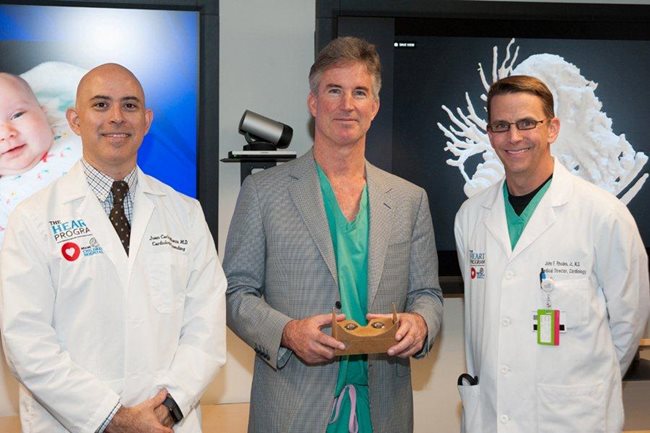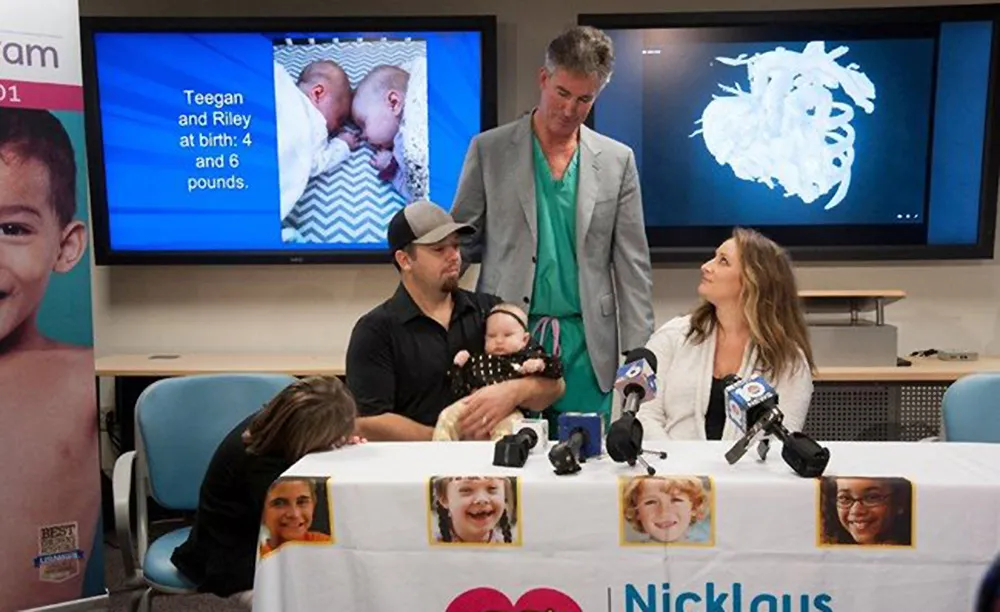“The patient was dying. Without surgery she would be dead by Christmas.”
This is what Dr. Redmond Burke of Niklaus Children’s Hospital in Miami, Florida told me over the phone early Thursday morning. The patient in question was Teegan Lexcen. She is 4 months old.
Dr. Burke was able to save her life, and he credits his success largely to the medical imaging capabilities provided by virtual reality using a Google Cardboard.
Baby Lexcen was born with her heart placed too far to the left in her chest. Surgery was needed, but the high-risk nature of the condition and the patient’s infant age meant few physicians were willing to attempt the procedure.
“Surgeons need to be able to visualize the entire procedure before they step into the operating room, ” Burke said. “Other teams passed on Teegan because they kept running into walls when trying to visualize her procedure.”

Burke says “inoperable” is not a word he likes to use, so he and his team began to look for creative solutions. Those solutions were discovered after one enterprising member of the team uploaded scans of Lexcen’s chest to Sketchfab and viewed them on Google Cardboard.
“Dr. Juan-Carlos Muniz who runs our MRI program came to me two weeks before surgery and handed me a piece of cardboard with a smartphone in it,” Burke said. “I looked inside and just by tilting my head I could see the patient’s heart. I could turn it. I could manipulate it. I could see it as if I were standing in the operating room.”
A low quality model of another patient’s heart created with CT scan data. This is somewhat similar to what Dr. Burke used to prepare for surgery.
The first problem Burke needed to solve was whether a standard central incision over the sternum would be sufficient for the operation, or if he would need to cut directly above Lexcen’s misplaced heart on the left side of her chest.
“With VR I could see her chest wall as well as her heart. From there I could see that the standard incision would be fine. Right there the first big hurdle was crossed,” Burke said.
Using VR, Burke was able to convert Lexcen’s case from an inoperable procedure into a well-planned surgery with a high chance of success.
“I don’t like to go back and rethink what could have happened, but I will say that this technology allowed us to perform the operation quicker and with much less trauma to the patient,” Burke said. “If she had been under for just one more hour, her kidneys may have suffered too much and she could be alive, but on dialysis for the rest of her days.”
Burke explained that in his practice he views every operation as possible, “it’s just a matter of whether or not you think you as a doctor can do it. Can you see all the steps in your head and come up with a strategy for your team. VR allowed me to see that this operation was possible and come up with a plan that would save my patient.”
Burke has been named one of the 20 most innovative modern pediatric surgeons. He grew up in Silicon Valley and says merging medical science with the latest tech is his passion. He pioneered less-invasive procedures by designing his own laparoscopic tools, and he founded Cardio Access: the most widely-used reporting database for the outcomes of heart surgeries.
After this procedure, Burke says his next project is to raise awareness for VR imaging in medical practices.
“In every industry there are innovators, and early adopters,” he said. “We want to reach out to developers and connect the people with the ideas to the people who perform the operations and the manufacturers who make the equipment.”
When asked if he believes VR represents the future of medicine his response was emphatic: “It’s just a matter of time and getting the word out,” he said. “The more exposure there is the more adoption there will be.”






























